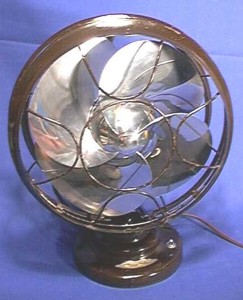Saturday 17 May 2014
Hi Listed in 10 More American Industrial Disasters!.
Hi - Worst Air Pollution Disasters!!."
The "Donora Death Fog"
Hi Importance of Our Industry; Historic Case's!.
.jpg)
@ Meuse Valley Disaster...,
@ London...,
@ Los Angeles...,
@ Piscataway...,
.jpg)
A Hi Brief History of Fans "A Residential Approach!."


Hi Industrial Ventilation!.
Air pollution and health;
Hi Air-conditioned Ants!.!
Thursday 15 May 2014
Hi Translated study guides (LEED 2009)!.

Hi Translated study guides (LEED 2009) are now available for free.
- LEED Green Associate Study Guide
- Green Building and LEED Core Concepts Guide
- LEED AP BD+C Study Guide
- LEED AP O+M Study Guide
- LEED Green Associate Study Guide
- Green Building and LEED Core Concepts Guide
- LEED AP BD+C Study Guide
- LEED AP O+M Study Guide
- LEED Green Associate Study Guide
- Green Building and LEED Core Concepts Guide
- LEED AP BD+C Study Guide
- LEED AP O+M Study Guide
- LEED Green Associate Study Guide
- Green Building and LEED Core Concepts Guide
- LEED AP BD+C Study Guide
- LEED AP O+M Study Guide
Wednesday 14 May 2014
Hi Employment! Get The Five (5) Top Tips Here!.
.jpg)
"Congrats, you are finally graduated from your University. The only snag is where and how to find a new job corresponding to your studies? Here are some tips for you."
1. Well-presented and coherent resume and cover letter;
.jpg)
2. Searching scrupulously;
.jpg)
3. Use social networks;
4. Do what it takes to stand out among the crowd;
.jpg)
5. Be confident and don't give up;
.jpg)
Hi Top 10!Hi Top 10!Hi Top 10!Hi Non-Government Organizations & Hi Successful Traders Ever!

"There is a big difference between an investor and a trader although both of them can be ruined or wealthy. Starting a trade may not require huge investment or bank loan.
Some of the worldwide traders managed to go through certain trials and still remain leaders of the best trades of all times."
.jpg)
1. The art of speculation (Jesse Livermore);
2. Understanding the dynamics (Paul Tudor Jones);
3. Break of the Bank Of England (George Soros);
4. Bet on Japanese assets (Templeton Shorts);
.jpg)
5. Oil trade (Andrew Hall);
6. Flipping (Paul Rotter);
.jpg)
7. Shorting real estate market (John Paulson);
8. Prescient short-seller (Jim Chanos);
.jpg)
9. Gambling on Geopolitical play (Louis Bacon);
10. Investing in distressed assets (David Tepper);
.jpg)
"Organizations get involved in a myriad of fields. They are promoting development in the country they are working and even in the whole world.
The most famous and high-ranking NOGs are presented below."
.jpg)
1. Wikimedia Foundation;
2. Partners In Health;
3. Oxfam;
.jpg)
4. International Rescue Committee;
5. PATH;
.jpg)
6. CARE International;
7. Médecins Sans Frontières;
8. Danish Refugee Council;
.jpg)
9. Ushahidi;
.jpg)
Hi Popular Posts
-
Hi Key Steps to Improving the Customer Experience through Business Process Management (BPM). *Competing effectively in today's...
-
The Hi World's Best Engineering Schools!. 50. San Francisco State University San Francisco State University scored a 2...
-
Hi In pictures "A": 20 hotels under construction. 1 Of 21 Hilton Riyadh Hotel & Residence. Set to open next y...
-
Hi It# Modern Engineered Warfare Centuries Beyond The Rise & Fall Of Empires!!!. Commemorating engineers' role in WW1!. ...
-
Hi Grinding Advice You Probably Didn’t Know!. Here are some additional reasons why you should not even need gloves when working on gri...
-
Hi Dual Core Whitepaper Download!. Discussing the most pressing issues and innovative solutions in the industry!. Mersen Pioneer...
-
Hi Prefab Skyscrapers Reach for the Heavens Reshaping HVAC! Da Vinci Tower! Dubai!. Keeping an eye on the future is an important pa...
-
1000s-1400s This was a period of Greeks, Romans, Egyptians, Chinese and of course the Indians. While Egyptian’s used to use man powered...
-
Hi Top 5 Hazards for Coal Mine Ventilation Engineers and Officers! : Mines are dangerous places to work in, which has been emp...
-
Hi Clean, Hi Hygiene! How To Keep Your Air Ducts Clean! Hi Domestic HVAC Focus! Part 1: View below the main key " 4 Reas...
Search Hi E Community
Hi Definitions of disaster types.
Sudden natural | Long-term natural | Sudden human-made | Long-term human-made |
Avalanche
Cold wave
Earthquake Aftershock Floods
Flash flood Dam collapse
Volcanic eruption Glowing avalanche Heat wave
High wind cyclone Storm Hail Sand storm Storm surges Thunder storm
Tropical storm Tornado Insect infestation Landslide Earth flow Power shortage Tsunami and tidal wave
| Epidemics
Drought
Desertification Famine Food shortage or crop failure
| Structural collapse
Building collapse
Mine collapse or cave-in Air disaster Land disaster
Sea disaster Industrial/technological accident Explosions Chemical explosions
Nuclear explosion or thermonuclear explosions Mine explosions
Pollution Acid rain Chemical pollution Atmosphere pollution Chlorofluoro-carbons (CFCs) Oil pollution Fires Forest/grassland fire
| National (civil strife, civil war)
International (war-like encounters)
Displaced population Displaced persons Refugees
|








.jpg)


.jpg)
.jpg)